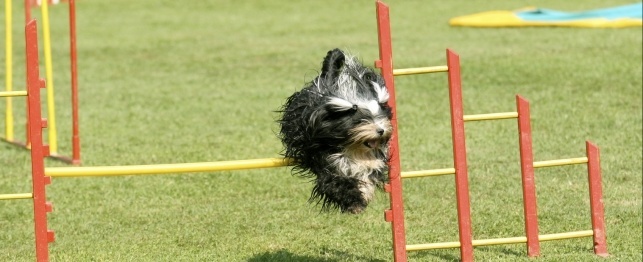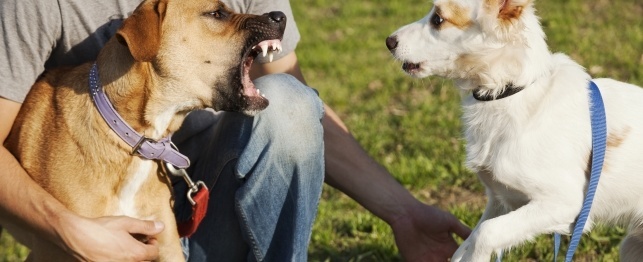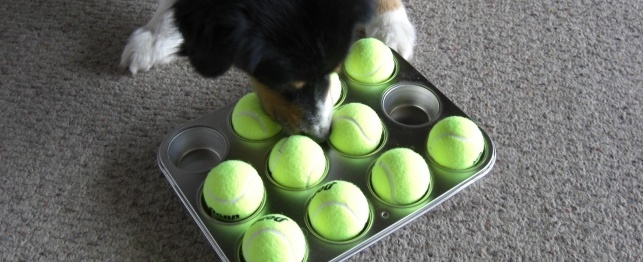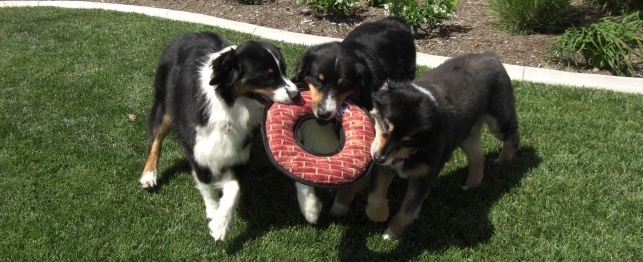I was sitting in the waiting room of my local HMO with a sinus infection and happened to pick up the recent issue of Outdoor Life magazine. Actually, it was the only thing to read, but that didn't bother me as most hunting publications usually include at least one article on dog training.
I was lucky, as this month's dog training article was interesting enough for me to tie into this week's e-zine issue.
On page 36, sandwiched between the 'Professional Bass Tournament'article and the "His camo-painted truck and 'Kiss My Bass' bumper sticker are the only endorsements you'll ever need" advertisement, I found a story by veteran dog man, Larry Mueller.
Mueller recants meeting 82 year-old James Evans, of Naruna, Va. who owned an 11 year-old Lab-weimaraner cross that could allegedly multiply numbers!!!
Mueller states that, "Evans decided to teach [his] dog to count to 10... 'What's the first number?' One bark. 'What comes after one?' Two barks. And so on. [His] dog counted backward, too, in addition to correctly answering what comes before or after any number not exceeding 10."
As a professional dog trainer, I hear amazing stories like this all the time. The only problems is that upon further investigation... they NEVER turn out to be true.
Mueller writes, "Evans began to suspect that [the] dog was reading his mind."
However, anyone who has studied the dog's mind (and canine behavior in general) knows that:
1.) Dogs can't read our mind. They read our body language.
2.) Dogs can't do math. Especially multiplication.
Mueller must have come to the same conclusion as I did, because he decided to review several video tapes of Evans and his dog performing their multiplication trick. But it wasn't until he actually met with Evans that he was able to ascertain how the dog was figuring out the math problems.
"All I knew for sure was that James Evans was no trickster trying to deceive the public for gain," and that the old man had wanted to know how the dog did it, as much as anyone.
Mueller continues, "I studied the video tape and recognized that the word, ' What's ' could be the cue to start barking. I thought the signal to stop might be Evans withdrawing his hand from his pocket with a kibble reward. But it didn't correlate, so I asked Evans if I could rig something to tell us the approximate location of the cue, if there was one."
To make a long story longer, Mueller found that when the dog could not see Evans, he stopped getting the answers right! After further study, Mueller noted, "I noticed an almost imperceptible twitch-- a reflex action like a blink occurring without conscious thought... I asked Evans to stand motionless. He found it difficult, and [his] dog's barks in answer to his questions [became] random." When Evans wasn't allowed to subconsciously cue the dog, the dog was no longer able to come up with the correct answers.
In sum, the dog was relying on his owner for the answers. Which, in and of itself is a pretty impressive feat, even if it isn't comparable to knowing your multiplication tables!
Here's two examples that probably apply to your daily training:
1.) Many owners tend to start bending over before telling their dog the, "Down" command. Because of this, the dog starts to cue off the owner's body language (just as Evan's dog did) and lays down anytime the owner bends over... but not if the owner stands up straight and issues the command!
Solution: Always give the command FIRST, before bending over and making the dog do it. This way, the dog will link the behavior with the command, rather than with your body language.
2.) Amateur handlers tend to tell their dog "Heel," and then walk with their shoulders angled back towards their dog, so that they can look at their dog while they're walking.
The problem with this is that the dog reads your body language and attempts to align himself with your shoulders, thus lagging behind the owner, rather than walking in the heel position (aligned with your left heal.)
Solution: Keep both shoulders straight forward as you walk. If you need to look at your dog (you should)... cock your head, without angling your shoulders. This will keep your dog lined up right alongside you.
That's all for now, folks!
Adam

 Agility: an Exciting Dog Sport
Agility: an Exciting Dog Sport
Agility: an Exciting Dog Sport
Agility: an Exciting Dog Sport
 Dog Parks and Bites: What You Need to Know
Dog Parks and Bites: What You Need to Know
Dog Parks and Bites: What You Need to Know
Dog Parks and Bites: What You Need to Know
 MORE Games That Delight Dogs
MORE Games That Delight Dogs
MORE Games That Delight Dogs
MORE Games That Delight Dogs
 The Fabulous Muffin Tin Game for Dogs
The Fabulous Muffin Tin Game for Dogs
The Fabulous Muffin Tin Game for Dogs
The Fabulous Muffin Tin Game for Dogs
 Playing Tug of War with Your Dog
Playing Tug of War with Your Dog
Playing Tug of War with Your Dog
Playing Tug of War with Your Dog